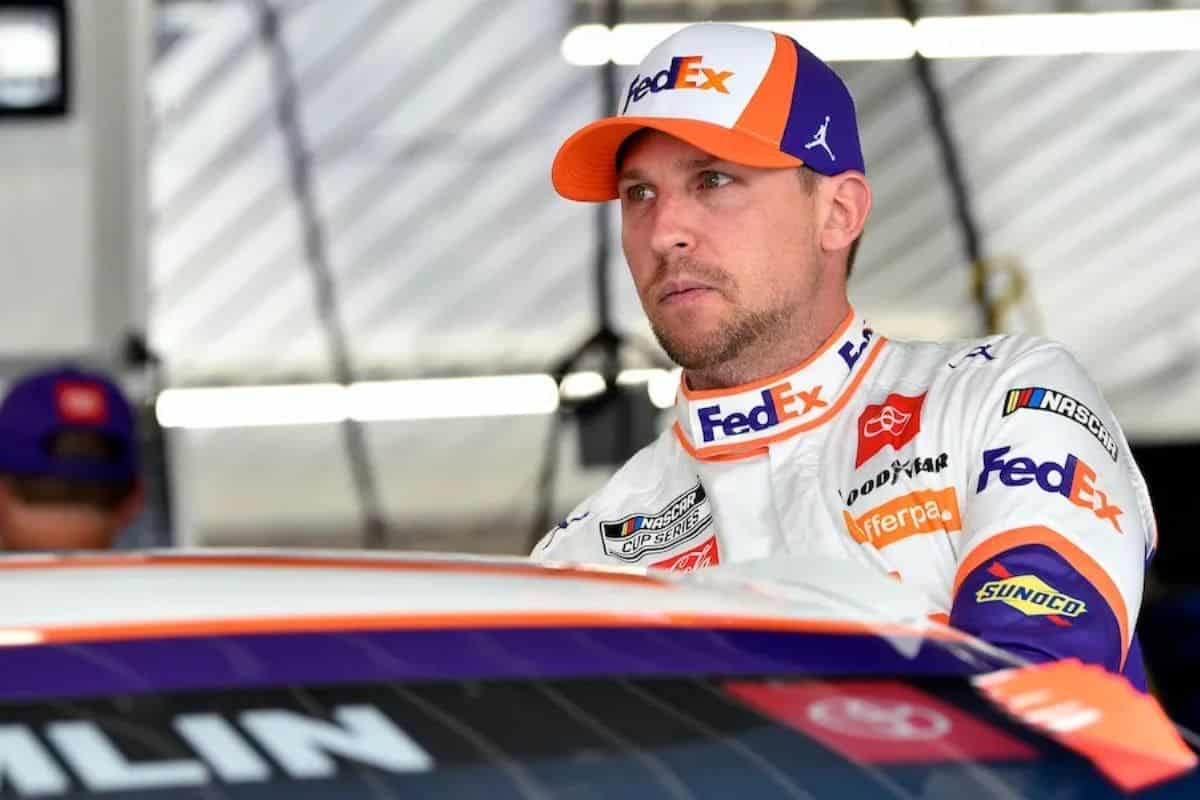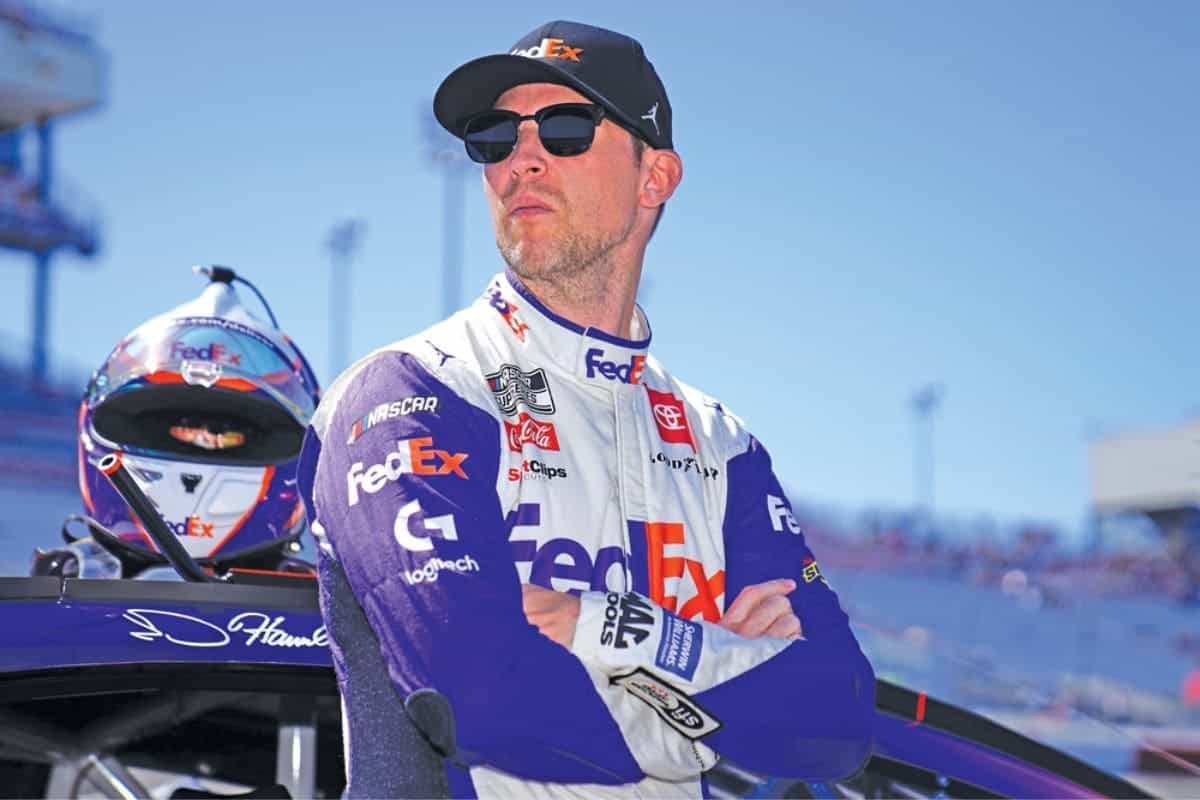Denny Hamlin’s Controversial Track Limits Proposal: Denny Hamlin’s proposal for pratical track limit rules at NASCAR’s COTA races sparks debate. Will NASCAR embrace change? His call for clear guidelines to curb unfair advantages resonates. NASCAR faces enforcing challenges, complexity evident in penalties at COTA. Esses shortcuts reveal notable performance gains and the need for consistent enforcement. The future of track limits at COTA hangs in the balance. If you want to uncover the full extent of the controversy and potential solutions, stay tuned.
Key Takeaways
- Hamlin advocates for pragmatic track limit rules considering driver challenges.
- Emphasis on clear guidelines to prevent unfair advantages and uphold racing integrity.
- NASCAR executive acknowledges challenges at COTA, highlighting need for improvement.
- Consistent enforcement crucial for fair competition regarding shortcuts through the esses.
- NASCAR evaluating potential adjustments in officiating methods at COTA for integrity and competitiveness.
Track Limit Penalties Plague NASCAR Races at COTA
Track limit penalties have become a pervasive issue in NASCAR races at the Circuit of the Americas (COTA), raising concerns among drivers and fans alike. The recent race at COTA saw NASCAR administer a staggering 40 penalties for track limit violations, highlighting the gravity of the problem. These penalties not only affect the outcome of the race but also impact the overall viewing experience for fans who witness drivers being penalized for what could sometimes be minor infractions.
The strict enforcement of track limits at COTA has sparked debates within the NASCAR community, with many questioning the consistency and fairness of the penalties being handed out. Drivers, including top contender Denny Hamlin, have voiced their frustrations with the current rules, calling for a more pivotal approach to track limit enforcement. Hamlin emphasizes the need for flexibility, especially during pivotal moments like restarts, where the margins for error are slim.
NASCAR itself has acknowledged the challenges it faces with track limit enforcement at COTA, indicating that they are open to exploring potential solutions to address the issue. As the debate surrounding track limits continues to intensify, it remains to be seen how NASCAR will respond to the mounting pressure from drivers and fans to find a more balanced approach that guarantees fair competition while upholding the integrity of the sport.
Hamlin Advocates for Common Sense Approach
In his recent podcast discussion, Denny Hamlin passionately advocates for a common-sense approach towards track limit regulations, emphasizing the necessity of practical rules that consider the challenges faced by drivers, particularly in demanding sections like the esses. Hamlin’s call for a rule grounded in common sense resonates with many fans and experts who acknowledge the complexities of maneuvering tracks like the Circuit of the Americas (COTA). The esses, a series of fast and technical turns, pose a unique challenge to drivers, especially during intense moments like restarts where precision is paramount.
Denny Hamlin has a proposition for the track limits at COTA. 💡
— Dirty Mo Media (@DirtyMoMedia) March 25, 2024
Listen to Actions Detrimental with @dennyhamlin now!
Apple: https://t.co/mtiouayugw
Spotify: https://t.co/akhd6gAPEt
Web: https://t.co/09QXBe1Gw9 pic.twitter.com/bBXq2tz4s3
Hamlin’s plea for regulations that prevent drivers from gaining unfair advantages through shortcuts highlights the need for clear and enforceable guidelines. By stressing the importance of maintaining the integrity of racing while also considering the practical difficulties drivers encounter, Hamlin is promoting a balanced and fair approach to track limit rules. This approach not only enhances the competitive spirit of NASCAR but also ensures that drivers are tested on their skills and abilities rather than exploiting loopholes in regulations.
As NASCAR continues to evaluate its track limit policies, Hamlin’s push for a common-sense framework serves as a compelling argument for a more thoughtful and nuanced approach to regulation. By championing rules that are rooted in practicality and uphold the integrity of the sport, Hamlin sets a precedent for constructive dialogue and positive change within the NASCAR community.
NASCAR Exec Acknowledges Challenges at COTA
Acknowledging the complexities inherent in overseeing racing regulations, NASCAR executive Elton Sawyer has candidly addressed the challenges associated with enforcing track limits at the Circuit of the Americas (COTA). Sawyer’s acknowledgment of the difficulties in maintaining track limits at COTA underscores the complex nature of officiating in motorsports. The unique layout of the track, with its variety of corners and elevation changes, presents a significant task for officials to monitor consistently.
Sawyer’s admission also hints at the need for continuous improvement in the officiating standards within NASCAR. The dynamic nature of motorsports requires adaptability and agility from officials to ensure fair competition while maintaining safety standards. The acknowledgment of challenges at COTA serves as a reminder of the ever-evolving nature of racing regulations and the constant need for vigilance in enforcing them.
Elton Sawyer said:
“COTA is very challenging, I would rather go to Daytona, Talladega, Atlanta every day of the week from an officiating standpoint. We’re calling balls and strikes on every lap and that’s not really where we wanna be.”
As NASCAR grapples with the complexities of enforcing track limits at COTA, it becomes evident that a collaborative effort between officials, drivers, and track management is vital. Finding the right balance between allowing drivers to push the limits of performance and guaranteeing a level playing field is a delicate task that demands nuance and expertise. Sawyer’s candid acknowledgment sets the stage for a thoughtful discussion on how to address these challenges effectively and uphold the integrity of racing at COTA.
Drivers Penalized for Esses Shortcuts
Amidst the challenging enforcement of track limits at the Circuit of the Americas (COTA), recent penalties have been imposed on drivers for taking shortcuts through the esses, emphasizing the notable advantage gained and the intricacies of maneuvering the 20-turn, 3.41-mile course. The penalties come as a response to drivers attempting to gain an unfair advantage by cutting through the esses section of the track, which consists of a series of fast and technical turns that demand precision and skill.
To better understand the impact of these penalties, let’s explore a comparison of lap times with and without taking shortcuts through the esses:
| Driver | Lap Time with Esses Shortcut | Lap Time without Shortcut |
|---|---|---|
| Driver A | 1:35.25 | 1:37.40 |
| Driver B | 1:36.10 | 1:38.20 |
| Driver C | 1:35.60 | 1:37.80 |
| Driver D | 1:36.05 | 1:38.30 |
| Driver E | 1:35.90 | 1:38.00 |
The table showcases a clear trend where drivers taking shortcuts through the esses achieve notably faster lap times compared to those who stick to the track limits. This disparity underscores the need for consistent enforcement of track limits to guarantee fair competition and maintain the integrity of racing at COTA.
Future Considerations for Track Limits at COTA
With NASCAR carefully evaluating track limits at the Circuit of the Americas (COTA), potential adjustments in officiating methods for future races are being hinted at by Sawyer, emphasizing the pivotal balance between enforcement and preserving competitive integrity.
The discussions surrounding NASCAR’s potential return to COTA in 2025 have sparked debates on how best to navigate the challenges posed by track limits on road courses.
One key consideration revolves around the need for consistent enforcement of track limits to guarantee a level playing field for all competitors. This entails establishing clear boundaries that drivers must stick during races to prevent any unfair advantages. However, overly strict enforcement could stifle on-track action and hinder drivers from pushing the limits of their cars and skills.
On the other hand, a more lenient approach towards track limits could lead to controversies and accusations of favoritism if some drivers are allowed to gain an advantage by exceeding the designated boundaries. Striking the right balance is pivotal to maintaining the integrity of the sport while also allowing for exciting and competitive racing.
As NASCAR continues to deliberate on the best course of action regarding track limits at COTA, finding a solution that satisfies both drivers and fans will be paramount. The outcome of these discussions could shape the future of racing at the iconic circuit and set a precedent for how track limits are managed in road course events.
News in Brief
The ongoing discussion regarding track boundaries at NASCAR races, especially at COTA, emphasizes the necessity for a practical approach to enforcement. Denny Hamlin’s suggestion to reassess penalties and prioritize safety over rigid adherence to track boundaries is a positive move. NASCAR must thoughtfully evaluate the influence of track limits on race results and fan satisfaction going forward to guarantee fair and thrilling competition.
Our Reader’s Queries
Q. Has Denny Hamlin ever won a road race?
A. Hamlin secured his inaugural road course victory by leading a mere 10 laps out of the 90-lap race, but they proved to be the most crucial laps, particularly in the final stretch.
Q. Does FedEx still sponsor Denny Hamlin?
A. In 2023, FedEx’s decision to step back as the primary sponsor for the No. 11 car opened doors for additional sponsorship opportunities. Contrastingly, in 2020, FedEx served as Denny Hamlin’s primary sponsor for the entire season. However, by 2023, their involvement had dwindled significantly, accounting for just one-third of their previous commitment—an unprecedented shift in sponsorship dynamics.
Q. Who owns a NASCAR team with Denny Hamlin?
A. Owned and operated by basketball legend Michael Jordan and three-time Daytona 500 champion Denny Hamlin, the team represents a unique collaboration between two sporting icons. The team’s name, 23XI Racing, pays homage to Jordan’s iconic jersey number, 23, from his illustrious NBA career, and Hamlin’s own racing number.
Q. Who owns the FedEx NASCAR?
A. Denny Hamlin pilots the No. 11 car, sponsored by FedEx, under the ownership of Coy Gibbs.
ALSO READ: Denny Hamlin’s Interaction With Larson’s Daughter: Heartwarming Revelation!




